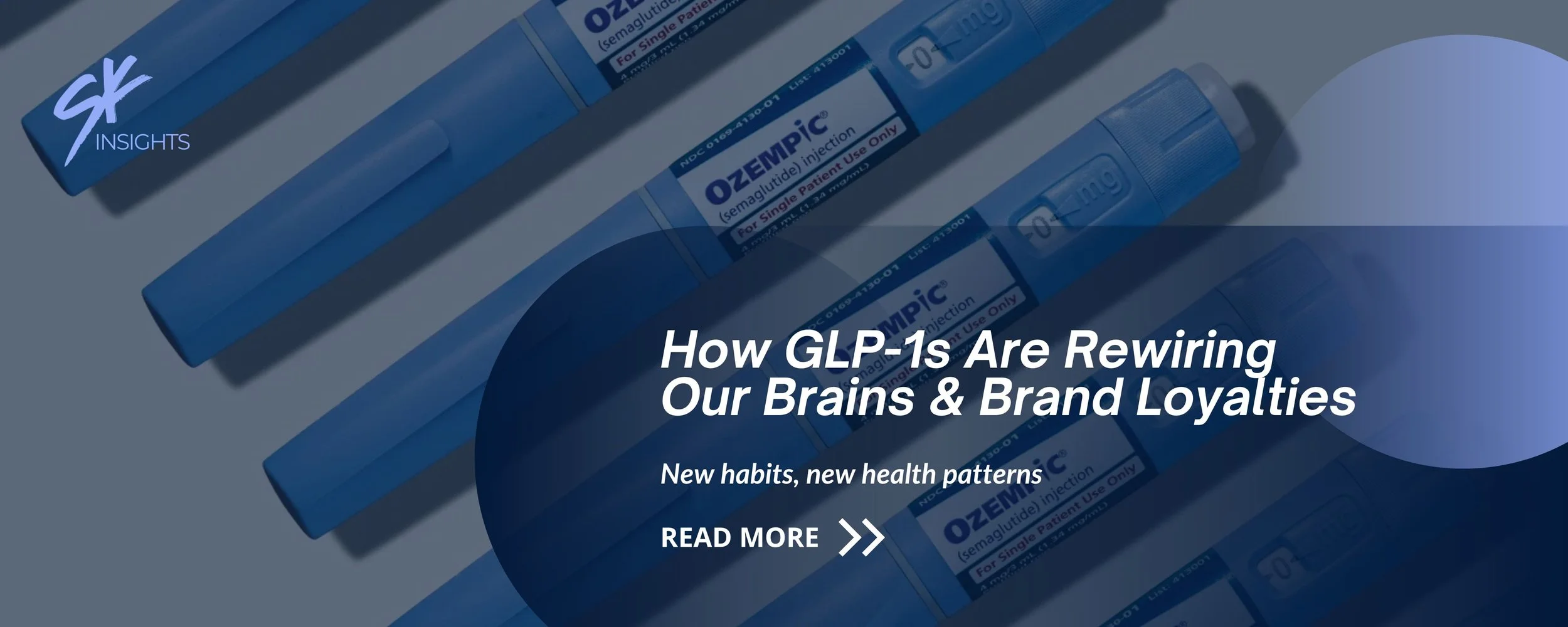How GLP-1s Are Rewiring Our Brains — and Brand Loyalties
Behavior is branding. If you change the first, the second always follows.
There’s a shift happening in real time, and it’s not just about weight loss. GLP-1s like Ozempic and Wegovy are changing people’s habits. And when habits shift, so does everything else.
People are eating less, craving less, shopping differently, and drinking more water than wine. They’re rethinking their morning coffee, skipping the side of fries, and closing their pantry doors with fewer snacks inside. And they’re not doing it out of willpower. They’re doing it because their bodies are telling them something different now.
That’s what fascinates me the most. We’re watching behavior change without the usual struggle. Appetite is no longer driving the same decisions. And when those decisions start to look different, so will loyalty.
Loyalty to restaurants built around indulgence. Loyalty to grocery brands that win on quantity. Loyalty to the old definition of value.
Eating Less, Thinking More
Across a few different studies, the same patterns are showing up:
Food purchases down by 6 to 11 percent
Almost half of users reporting smaller portions
People avoiding high-fat, high-sugar, and high-sodium foods
Breakfast getting skipped or scaled down
A drop in alcohol, soda, and sweetened drinks
More protein, more plants, more function per bite
We’re also seeing that users are shifting spending toward supplements and small, nutrient-dense foods that feel efficient. Think: protein, fiber, micronutrients. Less plate waste, fewer leftovers, smaller hauls.
Loyalty is Shifting
It’s not just about eating less. It’s about shopping and dining with more intention. And that shift has ripple effects.
Restaurants may need to rethink portion sizes. Brands might need to repackage. Snack aisles could look emptier. Convenience stores may feel the hit first, while fine dining stays relatively stable. And depending on how quickly supply chains adapt, we could even see more food waste upstream if demand drops before production does.
Less Appetite, Less Waste
What we’re seeing now could lead to less food waste in households. GLP-1 users tend to buy less, waste less, and gravitate toward foods that spoil less easily. But on the flip side, if food companies don’t adjust, that waste could shift earlier in the supply chain — unsold salty snacks, oversized portions, and produce that never makes it out the door.
Appetite Isn’t the Only Thing Changing
To me, the most interesting part isn’t just what’s changing — it’s why. Appetite was always a powerful driver of consumer behavior. When that signal changes, everything around it gets re-evaluated. What we crave, what we trust, what we reach for without thinking.
GLP-1s might have started in the world of medicine, but their influence is shaping fashion, travel, wellness, and how we define comfort, confidence, and choice. It’s not about being thin. It’s about being tuned in. Brands that ignore that won’t just feel outdated. They’ll feel tone-deaf.
References:
PwC GLP-1 Trends & Impact Survey, 2024
IFMA The Food Away from Home Association, June 2025 Report
ReFED: GLP-1s and Their Impact on Food Waste, 2025
CivicScience: GLP-1 Behavior Changes Study, Jan 2025
Goldman Sachs and JP Morgan projections on GLP-1 adoption
Cornell and Numerator Grocery Spend Study, 2025
Eat Well Global Research, 2025
Brian Roe, Agricultural Economist, Ohio State University





